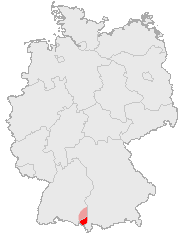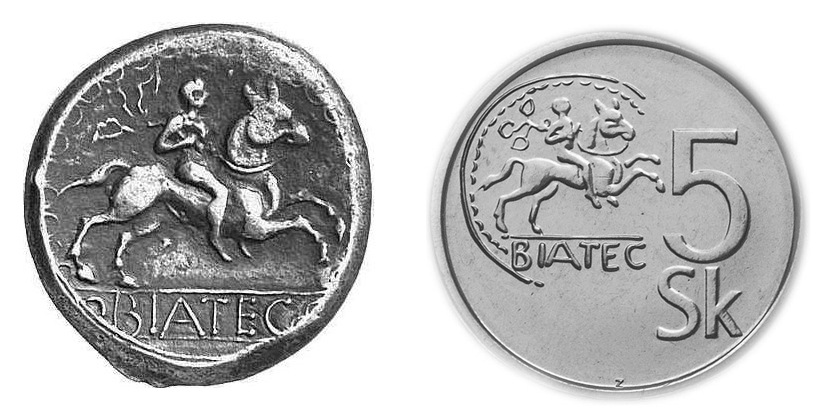|
Opfenbach
Opfenbach is a municipality in the district of Lindau in Bavaria in Germany. Geography Opfenbach is located in the Allgäu region, more precisely in the Westallgäu, about 15 km from Lindau. One of the districts of Opfenbach is Wigratzbad Wigratzbad is a hamlet in the Lindau district of Bavaria, Germany. The village is north of the town of Opfenbach, and south of Hergatz. It is situated on the ancient frontier of Bavaria and Swabia, a short distance from Germany's borders with .... Others are Mellatz, Beuren, Heimen, Litzis, Göritz, Mywiler and Ruhlands. History Opfenbach once was part of the Austrian authority of Bregenz-Hohenegg. Since the signing of the peace treaties of Brünn and Preßburg in 1805 the town belongs to Bavaria. In the course of the administrative reforms in Bavaria, the contemporary municipality was formed by the ''"Gemeindeedikt"'' of 1818. Population development In 1970 1,879, in 1987 1,952 and in 2000 2,196 inhabitants were living in the mun ... [...More Info...] [...Related Items...] OR: [Wikipedia] [Google] [Baidu] |
Wigratzbad
Wigratzbad is a hamlet in the Lindau district of Bavaria, Germany. The village is north of the town of Opfenbach, and south of Hergatz. It is situated on the ancient frontier of Bavaria and Swabia, a short distance from Germany's borders with Austria and Switzerland. Marian apparitions The village of Wigratzbad was home to a series of notable Marian apparitions in the early 20th century. The primary visionary was Antonie Rädler, who, while sick during the 1918 flu pandemic, reported a healing apparition of the Blessed Virgin Mary. Later, following the rise of National Socialism, Rädler defied authorities by refusing to replace an image of the Virgin in her father's butcher shop with one of Adolf Hitler; furthermore, she refused to substitute the Bavarian greeting of '' Grüß Gott'' with the mandated ''Heil Hitler''. As a result of her noncompliance, she endured several attempts on her life. In gratitude for their daughter's survival, Rädler's parents erected a Lourdes ... [...More Info...] [...Related Items...] OR: [Wikipedia] [Google] [Baidu] |
Lindau (district)
Lindau is a ''Landkreis'' (district) in Swabia, Bavaria, Germany; its capital is the city of Lindau. It is bounded by (from the east and clockwise) the district of Oberallgäu, Austria (federal state of Vorarlberg), Lake Constance and the state of Baden-Württemberg (districts of Bodensee and Ravensburg). History The city of Lindau became a Free Imperial City in the 13th century; it was directly subordinate to the emperor. The rural areas around Lindau were the property of monasteries or tiny counties, that rose and fell in the region. When Napoleon gained influence in the area, all these entities were dissolved in the German Mediatisation. Lindau fell to Bavaria. The district of Lindau was established in 1938. After the Second World War it became — like the Rhenish Palatinate — part of the French zone of occupation, while the rest of Bavaria was under American occupation. In 1955 the district was reincorporated into Bavaria, unlike the Rhenish Palatinate. The city of Lind ... [...More Info...] [...Related Items...] OR: [Wikipedia] [Google] [Baidu] |
Westallgäu
Westallgäu is the western part of the Allgäu in Germany. It contains large parts of the districts of Lindau in the south west of the region, Swabia in Bavaria and the district of Ravensburg in the south east of Baden-Württemberg. Westallgäu extends to the north to, amongst others, the towns of Leutkirch, Wangen and Isny. Westallgäu is bordered by Oberallgäu to the east and the Austrian state (Land) of Vorarlberg to the south. To the southwest, Westallgäu borders Lake Constance through the town of Lindau. The Adelegg mountains located in Westallgäu represent foothills of the Alps, reaching an altitude of 1,118 m at the ''Schwarzer Grat'' ("Black Ridge"). Towns and municipalities * Gestratz * Grünenbach * Heimenkirch * Hergatz * Hergensweiler * Lindenberg * Maierhöfen * Oberreute * Opfenbach * Röthenbach * Scheidegg-Scheffau * Sigmarszell * Stiefenhofen * Weiler-Simmerberg * Amtzell * Argenbühl * Arnach * Bad Wurzach * Bodnegg * Friesenhofen * Isny * ... [...More Info...] [...Related Items...] OR: [Wikipedia] [Google] [Baidu] |
Bayerisches Landesamt Für Statistik
The statistical offices of the German states ( German: ''Statistische Landesämter'') carry out the task of collecting official statistics in Germany together and in cooperation with the Federal Statistical Office. The implementation of statistics according to Article 83 of the constitution is executed at state level. The federal government A federation (also known as a federal state) is a political entity characterized by a union of partially self-governing provinces, states, or other regions under a central federal government (federalism). In a federation, the self-governin ... has, under Article 73 (1) 11. of the constitution, the exclusive legislation for the "statistics for federal purposes." There are 14 statistical offices for the 16 states: See also * Federal Statistical Office of Germany References {{Reflist Germany Statistical offices Germany ... [...More Info...] [...Related Items...] OR: [Wikipedia] [Google] [Baidu] |
Bavaria
Bavaria ( ; ), officially the Free State of Bavaria (german: Freistaat Bayern, link=no ), is a state in the south-east of Germany. With an area of , Bavaria is the largest German state by land area, comprising roughly a fifth of the total land area of Germany. With over 13 million inhabitants, it is second in population only to North Rhine-Westphalia, but due to its large size its population density is below the German average. Bavaria's main cities are Munich (its capital and largest city and also the third largest city in Germany), Nuremberg, and Augsburg. The history of Bavaria includes its earliest settlement by Iron Age Celtic tribes, followed by the conquests of the Roman Empire in the 1st century BC, when the territory was incorporated into the provinces of Raetia and Noricum. It became the Duchy of Bavaria (a stem duchy) in the 6th century AD following the collapse of the Western Roman Empire. It was later incorporated into the Holy Roman Empire, ... [...More Info...] [...Related Items...] OR: [Wikipedia] [Google] [Baidu] |
Germany
Germany, officially the Federal Republic of Germany (FRG),, is a country in Central Europe. It is the most populous member state of the European Union. Germany lies between the Baltic and North Sea to the north and the Alps to the south. Its 16 constituent states have a total population of over 84 million in an area of . It borders Denmark to the north, Poland and Czechia to the east, Austria and Switzerland to the south, and France, Luxembourg, Belgium, and the Netherlands to the west. The nation's capital and most populous city is Berlin and its main financial centre is Frankfurt; the largest urban area is the Ruhr. Settlement in what is now Germany began in the Lower Paleolithic, with various tribes inhabiting it from the Neolithic onward, chiefly the Celts. Various Germanic tribes have inhabited the northern parts of modern Germany since classical antiquity. A region named Germania was documented before AD 100. In 962, the Kingdom of Germany formed the ... [...More Info...] [...Related Items...] OR: [Wikipedia] [Google] [Baidu] |
Allgäu
The Allgäu (Standard German: , also Allgovia) is a region in Swabia in southern Germany. It covers the south of Bavarian Swabia, southeastern Baden-Württemberg, and parts of Austria. The region stretches from the pre-alpine lands up to the Alps. The main rivers flowing through the Allgäu are the Lech and Iller. Allgäu is not an administrative unit. The alpine regions of the Allgäu rise over 2,000 metres in elevation and are popular for winter skiing. The Allgovian area is notable for its beautiful landscapes and is popular for vacations and therapeutic stays.Its scenic countryside can be seen in Asmus, C. and Bufe, S. "Dampflokomotiven im Allgau" (1977, Hermann Merker). It is well known in Germany for its farm produce, especially dairy products including '' Hirtenkäse'' ("herdsman's cheese") and Bergkäse ("mountain cheese"). Besides tourism and dairy products, another important economic sector is the building of industrial equipment and machines. Fendt tractors, dev ... [...More Info...] [...Related Items...] OR: [Wikipedia] [Google] [Baidu] |
Lindau
Lindau (german: Lindau (Bodensee), ''Lindau am Bodensee''; ; Low Alemannic: ''Lindou'') is a major town and island on the eastern side of Lake Constance (''Bodensee'' in German) in Bavaria, Germany. It is the capital of the county ('' Landkreis'') of Lindau, Bavaria and is near the borders of the Austrian state of Vorarlberg and the Swiss cantons of St. Gallen and Thurgau. The coat of arms of Lindau town is a linden tree, referring to the supposed origin of the town's name (''Linde'' means linden tree in German). The historic town of Lindau is located on the island of the same name which is connected with the mainland by a road bridge and a railway dam leading to Lindau station. History The first use of the name Lindau was documented in 882 by a monk from St. Gallen, stating that Adalbert ( count of Raetia) had founded a nunnery on the island. However the remains of an early Roman settlement dating back to the 1st century have been found in the district of Aeschach. ... [...More Info...] [...Related Items...] OR: [Wikipedia] [Google] [Baidu] |
Bratislava
Bratislava (, also ; ; german: Preßburg/Pressburg ; hu, Pozsony) is the capital and largest city of Slovakia. Officially, the population of the city is about 475,000; however, it is estimated to be more than 660,000 — approximately 140% of the official figures. Bratislava is in southwestern Slovakia at the foot of the Little Carpathians, occupying both banks of the River Danube and the left bank of the River Morava. Bordering Austria and Hungary, it is the only national capital that borders two sovereign states. The city's history has been influenced by people of many nations and religions, including Austrians, Bulgarians, Croats, Czechs, Germans, Hungarians, Jews, Romani, Serbs and Slovaks. It was the coronation site and legislative center and capital of the Kingdom of Hungary from 1536 to 1783; eleven Hungarian kings and eight queens were crowned in St Martin's Cathedral. Most Hungarian parliament assemblies were held here from the 17th century until the Hunga ... [...More Info...] [...Related Items...] OR: [Wikipedia] [Google] [Baidu] |
Blessed Virgin Mary
Mary; arc, ܡܪܝܡ, translit=Mariam; ar, مريم, translit=Maryam; grc, Μαρία, translit=María; la, Maria; cop, Ⲙⲁⲣⲓⲁ, translit=Maria was a first-century Jewish woman of Nazareth, the wife of Joseph and the mother of Jesus. She is a central figure of Christianity, venerated under various titles such as virgin or queen, many of them mentioned in the Litany of Loreto. The Eastern and Oriental Orthodox, Church of the East, Catholic, Anglican, and Lutheran churches believe that Mary, as mother of Jesus, is the Mother of God. Other Protestant views on Mary vary, with some holding her to have considerably lesser status. The New Testament of the Bible provides the earliest documented references to Mary by name, mainly in the canonical Gospels. She is described as a young virgin who was chosen by God to conceive Jesus through the Holy Spirit. After giving birth to Jesus in Bethlehem, she raised him in the city of Nazareth in Galilee, and was ... [...More Info...] [...Related Items...] OR: [Wikipedia] [Google] [Baidu] |



